In last week’s somewhat belated post, I gave a long introduction to this question: What does it take to become a fossil, and what does it take to be found? I made the claim, too, that if you can understand how rare quality fossil finds are, you can begin to appreciate all that we do know and get excited about what we have yet to discover. So let’s get cracking!
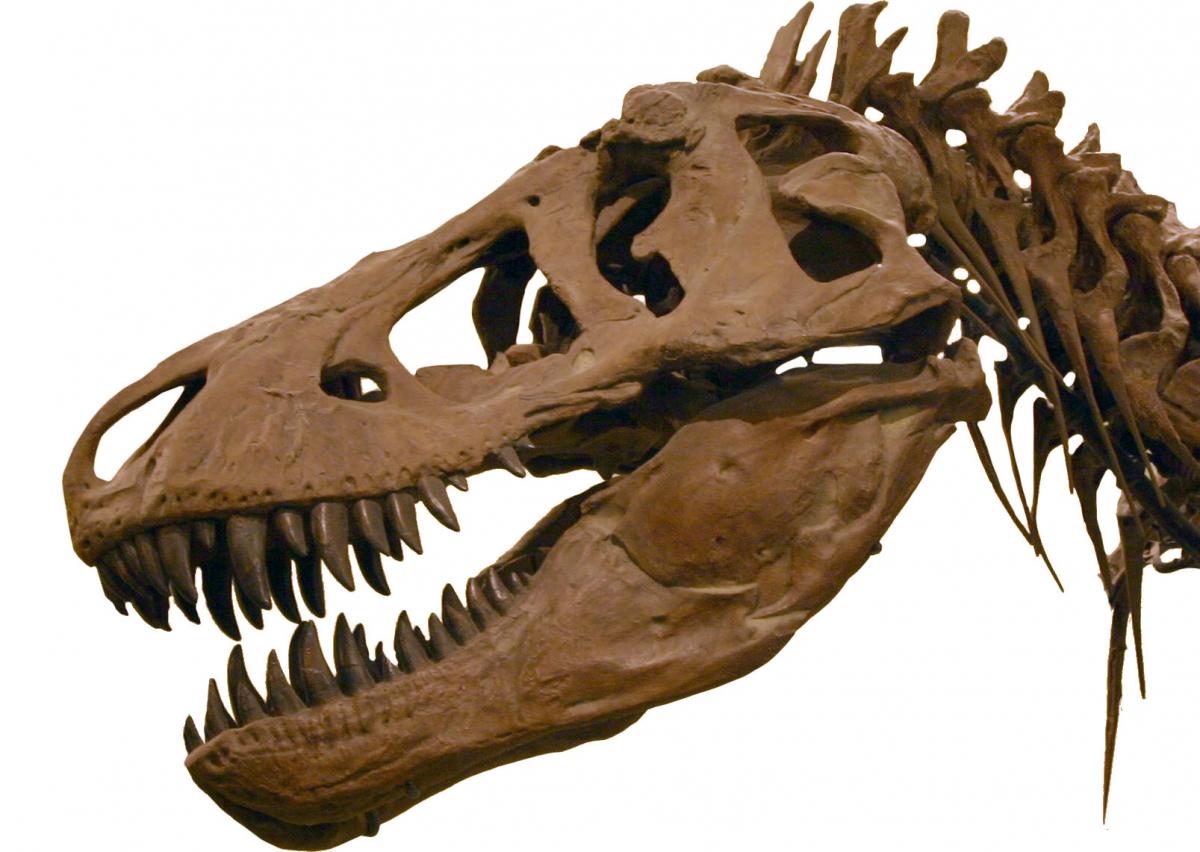 The first thing you need to understand is what, exactly, is a fossil? Most of the “classic” fossils that tend to come to mind, from Archaeopteryx to T. rex to early human skulls, are known as “petrified remains.” (I offer a caveat at this point to say that there are many different classification schemes for fossils, this is just one of them—but it’s the one that I’m most familiar with, and hey, I’m the writer.) Petrified remains are remains of ancient life that have been quite literally turned to rock. This process occurs when mineral-rich water seeps into the holes of bone, wood, or other organic material. As the minerals precipitate, they replace the dissolving organic tissue. (Incidentally, this is why it’d be pretty difficult to use one of those Jurassic Park ground-penetrating systems to find fossils—they’re almost indistinguishable from the surrounding rock in terms of density.)
The first thing you need to understand is what, exactly, is a fossil? Most of the “classic” fossils that tend to come to mind, from Archaeopteryx to T. rex to early human skulls, are known as “petrified remains.” (I offer a caveat at this point to say that there are many different classification schemes for fossils, this is just one of them—but it’s the one that I’m most familiar with, and hey, I’m the writer.) Petrified remains are remains of ancient life that have been quite literally turned to rock. This process occurs when mineral-rich water seeps into the holes of bone, wood, or other organic material. As the minerals precipitate, they replace the dissolving organic tissue. (Incidentally, this is why it’d be pretty difficult to use one of those Jurassic Park ground-penetrating systems to find fossils—they’re almost indistinguishable from the surrounding rock in terms of density.)
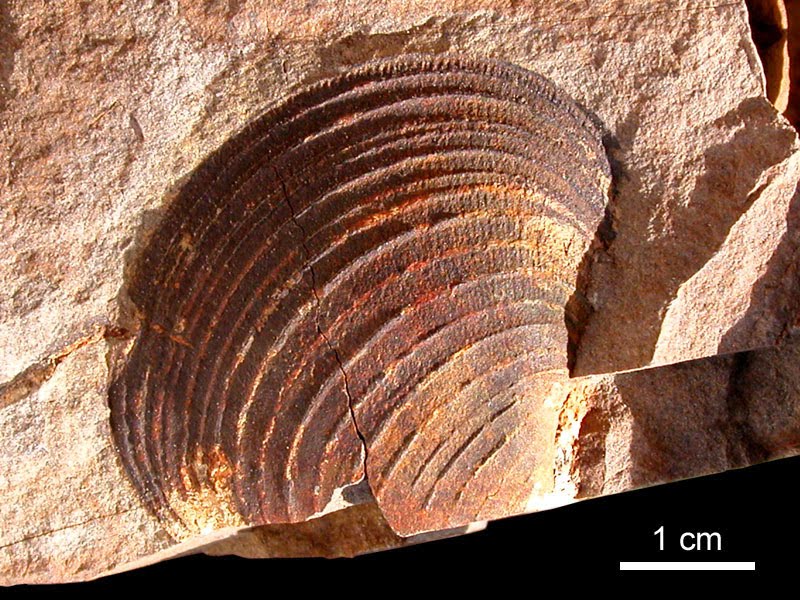 Molds and casts are fossils that occur when a structure is buried and surrounded by sediment. When the organic material dissolves, you are left with either an impression of the structure’s surface (a mold) or, if the hollow space of the mold gets filled in with sediment, a three-dimensional form (a cast).
Molds and casts are fossils that occur when a structure is buried and surrounded by sediment. When the organic material dissolves, you are left with either an impression of the structure’s surface (a mold) or, if the hollow space of the mold gets filled in with sediment, a three-dimensional form (a cast).
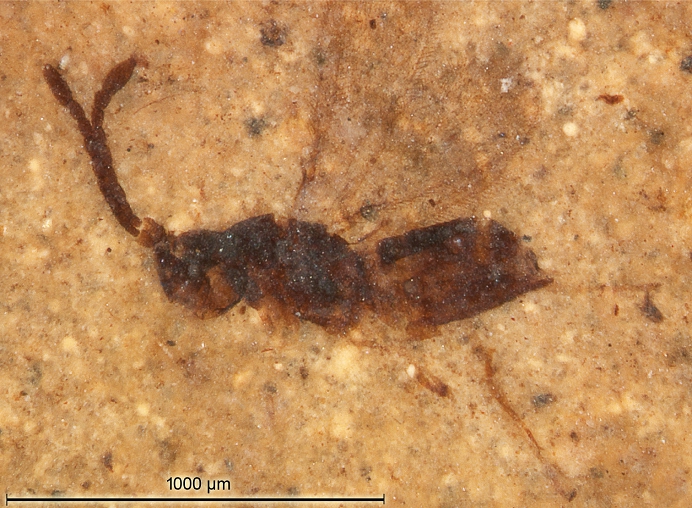 Compression fossils are two-dimensional fossils that form when a buried organism is squeezed by pressure until all that remains is a thin carbon film. Impression fossils are similar, but not even a carbon film remains; rather, you are left with a delicate impression of the organism.
Compression fossils are two-dimensional fossils that form when a buried organism is squeezed by pressure until all that remains is a thin carbon film. Impression fossils are similar, but not even a carbon film remains; rather, you are left with a delicate impression of the organism.
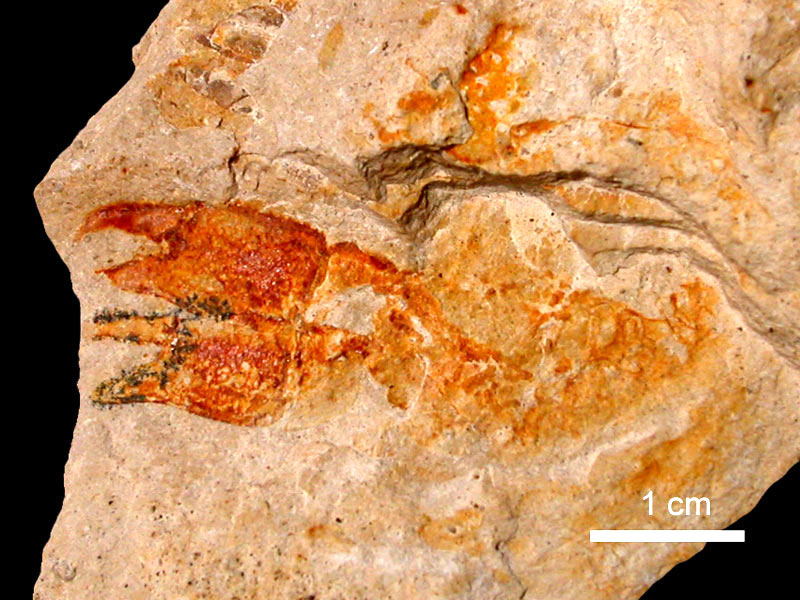
Next up in our tour of fossils are unaltered remains. Insects trapped in amber and mammoths trapped in permafrost are examples of this type. (And before you get too excited about cloning from DNA trapped in amber, read this. Short answer: It's very unlikely to work. Now, mammoths, on the other hand, are much younger than dinosaurs...there we might have something.)
On the other end of the spectrum from unaltered remains are trace fossils, which are not remains of the organism itself, but rather clues to its existence. Footprints, burrow casts, and coprolites (fossil poop) are all examples of trace fossils. Trace fossils are great becasue they can provide clues about behavior, such as how and how quickly an organism moved.
 So now that we all understand what fossils are, we can look for commonalities to answer the question: what does it take to become one? Reading through the different fossil types, one thing should be obvious: to become a fossil, you need to be buried. Getting buried is important not only because the modes of fossilization all depend on getting covered over in sediments, but also because getting buried protects the organism from decay and scavenging. In which environments are organisms most likely to become buried quickly? Environments with water—where there is water, there are sediments. But it’s not quite as simple as that. Rain forests have a lot of water, but there is almost no burial in rain forests because there are so many microbes that dead things get decomposed very quickly. Incidentally, this is the reason why most rain forest soils are notoriously nutrient-poor—none of the nutrients from fallen leaves or dead organisms get into the soil—they go right into the bellies (such as they are) of decomposers.
So now that we all understand what fossils are, we can look for commonalities to answer the question: what does it take to become one? Reading through the different fossil types, one thing should be obvious: to become a fossil, you need to be buried. Getting buried is important not only because the modes of fossilization all depend on getting covered over in sediments, but also because getting buried protects the organism from decay and scavenging. In which environments are organisms most likely to become buried quickly? Environments with water—where there is water, there are sediments. But it’s not quite as simple as that. Rain forests have a lot of water, but there is almost no burial in rain forests because there are so many microbes that dead things get decomposed very quickly. Incidentally, this is the reason why most rain forest soils are notoriously nutrient-poor—none of the nutrients from fallen leaves or dead organisms get into the soil—they go right into the bellies (such as they are) of decomposers.
Another violator of the die-near-water rule is the desert. Desert environments are 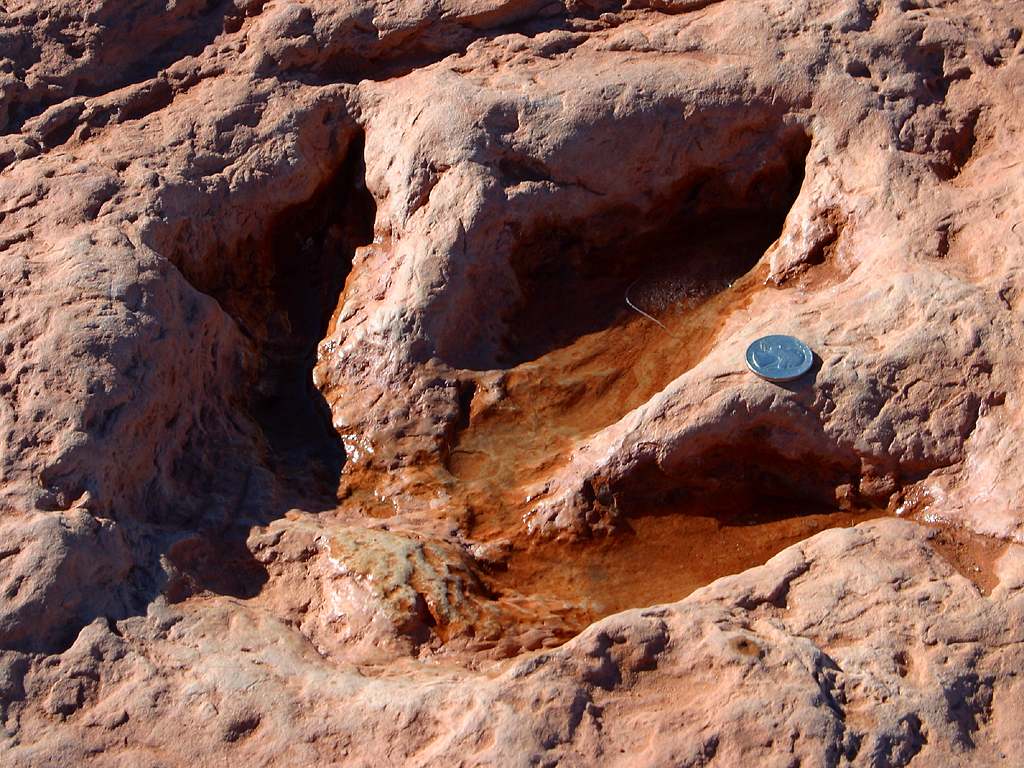 actually pretty conducive to fossilization. There aren’t too many active microbes and when organisms get dried out, they get less appealing to scavengers. Add to that blowing sand and you get a good overall chance of an intact burial.
actually pretty conducive to fossilization. There aren’t too many active microbes and when organisms get dried out, they get less appealing to scavengers. Add to that blowing sand and you get a good overall chance of an intact burial.
So, taken all together, the best environments to die in if you want to become a fossil are the shallow ocean, near or in rivers, and deserts. Want to have some fun? Think about the skewed snapshot fossilization is likely to take of our present biodiversity. Chances are, future humans would know nothing (from fossils at least) of the diversity in the rain forest or on the Serengeti plains. Weird, no?
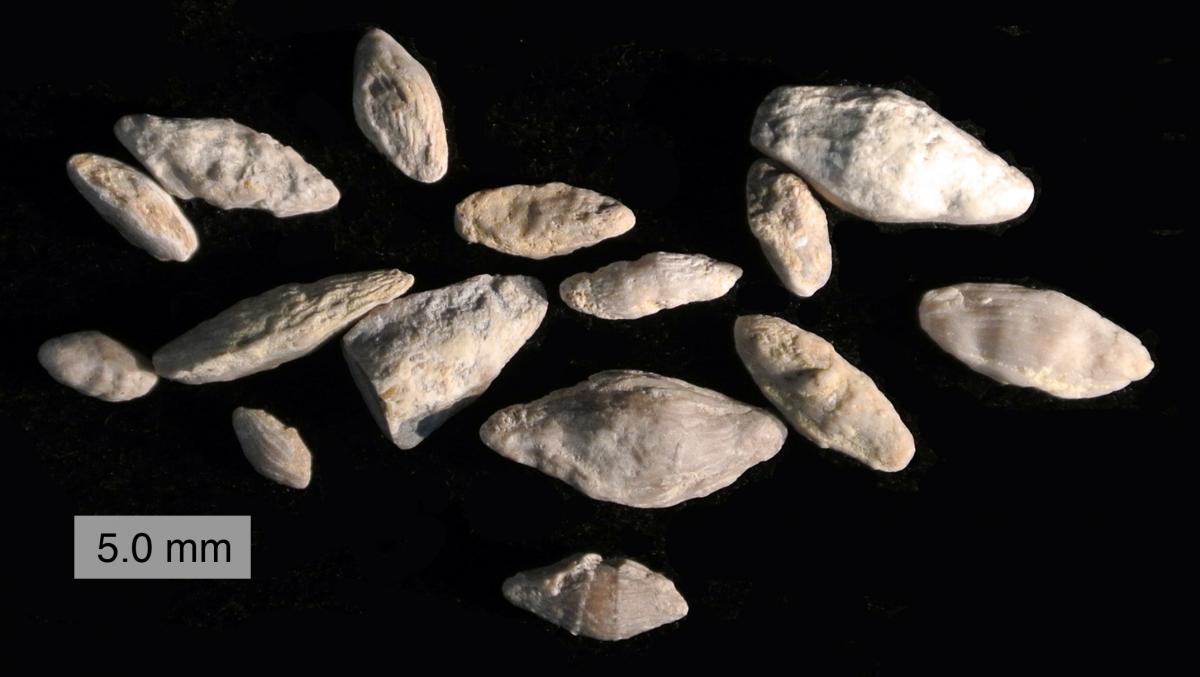 Okay, I’m getting off track! What else do you need to become a fossil? Hard parts help a lot. Bones are hard, as are the exoskeletons of arthropods and insects. But also hard are the mineralized structures of many single-celled organisms, such as diatoms, radiolarians, and foraminifera (when fossilized, these organisms are examples of "microfossils"). And this brings up a point made by reader John Hershman, that despite my claim that becoming a fossil is realy hard, some fossils are extremely common. To illustrate his point, John brought up the chert that is common in his area. Indeed, some types of chert are made up of diatoms and radiolarians, so they’re essentially all fossil. So, yes, microfossils are pretty darn common, though if you think of it in relative terms (how many fossilized vs. how many ever existed), I'm guessing that it wouldn't be as impressive. However, it is worth noting that invertebrate paleontologists, epecially those that work with microfossils, have more samples than they know what to do with. I remember once in grad school that a colleague was counting foams in a small sample and he had more on one slide than there were known examples of most vertebrate groups…in the world. All is not fair in matters of paleontology!
Okay, I’m getting off track! What else do you need to become a fossil? Hard parts help a lot. Bones are hard, as are the exoskeletons of arthropods and insects. But also hard are the mineralized structures of many single-celled organisms, such as diatoms, radiolarians, and foraminifera (when fossilized, these organisms are examples of "microfossils"). And this brings up a point made by reader John Hershman, that despite my claim that becoming a fossil is realy hard, some fossils are extremely common. To illustrate his point, John brought up the chert that is common in his area. Indeed, some types of chert are made up of diatoms and radiolarians, so they’re essentially all fossil. So, yes, microfossils are pretty darn common, though if you think of it in relative terms (how many fossilized vs. how many ever existed), I'm guessing that it wouldn't be as impressive. However, it is worth noting that invertebrate paleontologists, epecially those that work with microfossils, have more samples than they know what to do with. I remember once in grad school that a colleague was counting foams in a small sample and he had more on one slide than there were known examples of most vertebrate groups…in the world. All is not fair in matters of paleontology!
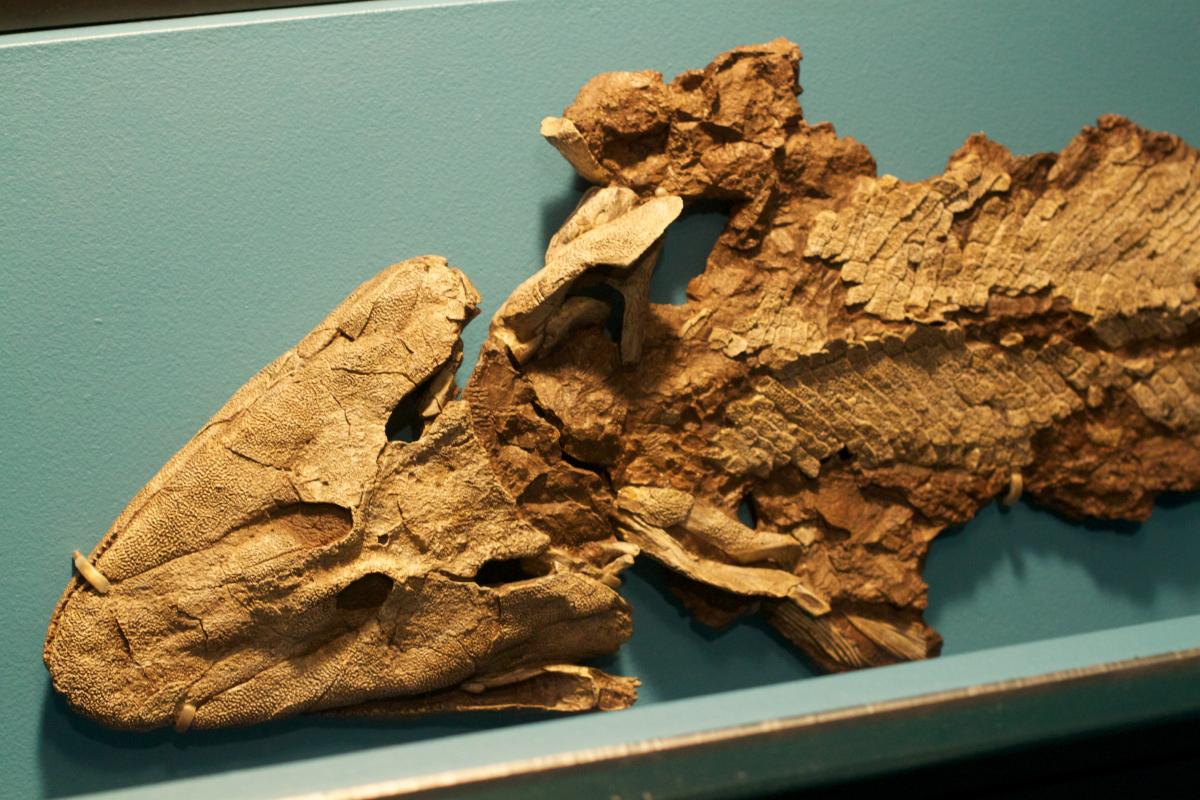 In sum: if you want to become a fossil, have hard parts and die near a river, in the shallow ocean, or in the desert. It also doesn't hurt if you're a tiny microorganism. Tiktaalik, the “fishapod” that is at the center of the HHMI film I referenced in part 1, was not a microorganism, but it did have plenty of hard parts and lived in shallow water—two factors working in its favor in terms of being fossilized. But it still took Dr. Shubin’s team years to find what they were looking for and they had to go all the way to the Canadian Arctic to do it. Why? Stay tuned for part 3.
In sum: if you want to become a fossil, have hard parts and die near a river, in the shallow ocean, or in the desert. It also doesn't hurt if you're a tiny microorganism. Tiktaalik, the “fishapod” that is at the center of the HHMI film I referenced in part 1, was not a microorganism, but it did have plenty of hard parts and lived in shallow water—two factors working in its favor in terms of being fossilized. But it still took Dr. Shubin’s team years to find what they were looking for and they had to go all the way to the Canadian Arctic to do it. Why? Stay tuned for part 3.
Have an idea for a future Misconception Monday or any other kind of post? See some good or bad examples of science communication lately? Drop me an email or shoot me a tweet <at>keeps3.

